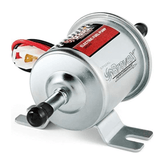How to Sand A Ceiling Like a Pro: The Ultimate Guide
Are you ready to transform your ceiling like a pro? Discover the secrets of flawless ceiling sanding in our ultimate guide. Get ready to tackle the challenge head-on and achieve stunning results. It's time to learn how to sand a ceiling like a true expert. Are you up for the task?

Preparing for the Task
1. Check If Your Ceiling Contains Asbestos
Before starting any sanding or renovation project, it is essential to determine whether your ceiling contains asbestos. Asbestos, a hazardous material, was widely used in popcorn ceilings, especially in old houses. When materials containing asbestos are disturbed, they release harmful fibers into the air. So, it’s a must to test for it.
Carefully take a sample of the popcorn texture from the ceiling and send the sample to a local lab. If it’s detected to contain asbestos, leave the ceiling alone and call a professional contractor to do the work. If not, you can proceed.
2. Clear the Room
Remove all furniture, fixtures, and other items from the room. This will not only shield them from dust and debris but also give you plenty of space to work.
3. Protect the Floor and Walls
Cover the floor with plastic sheets to prevent dust and particles from settling. Additionally, use painter's tape to secure plastic sheeting along the adjacent walls, creating a barrier that will further minimize the spread of dust.

4. Collect the Necessary Tools and Materials
Make sure you have the following items ready:
- Safety goggles
- Dust mask
- Plastic sheets
- Sander
- Sandpaper (120-220 grit)
- Vacuum cleaner
- Step ladder (depending on ceiling height)
Step-by-Step Guide to Sand a Ceiling
Now that you've made all the necessary preparations, let's dive into the step-by-step process of sanding your ceiling without creating a mess.
Step 1: Put on Protective Gear
Before you begin sanding, ensure your safety by wearing safety goggles to protect your eyes from dust particles and a dust mask to avoid inhaling any potentially harmful substances.
Step 2: Inspect and Repair the Ceiling
Inspect the ceiling for any cracks, holes, or imperfections. Use a joint compound and a putty knife to fill in these areas. Wait until the compound is completely dry before you begin the sanding process.
Step 3: Test the Surface
Before tackling the entire ceiling, it's crucial to test a small area first to confirm if the surface is suitable for sanding. Start by lightly sanding a small patch and assess the results. If the paint or texture appears to be loosening easily without excessive dust, you can proceed with confidence.
Step 4: Set up for Sanding
Attach the sandpaper to the sanding pole or extendable drywall sander. They allow easy access to the ceiling without the need for ladders. Start by using a coarse-grit sandpaper such as 120 grit and gradually transition to finer grits, like 180 grit, for achieving a smoother finish. Ensure that the sandpaper is securely attached.
Then begin sanding the ceiling in circular movements, using long and even strokes. Keep the sanding pole or sander flat against the surface to achieve an even finish. Start from one corner of the ceiling and work your way across in a systematic manner. Apply gentle pressure and avoid pressing too hard, as it may damage the ceiling. Work on small areas at a time.
Bonus Tips: Bravex electric drywall sander is an efficient tool for sanding ceilings. With its built-in extension, the tool's length can be adjusted from 4.6ft to 6.3ft, enabling you to reach heights of up to 12ft. And the detachable 360°rotating sanding disk and 90°swivel head make accessing to hard-to-reach areas, corners and edges much easier.

Step 5: Clean Up as You Go
To minimize the amount of dust in the air and on the floor, periodically clean the sanding dust using a vacuum cleaner. If you are using Bravex, it can be attached to your own vacuum cleaner, and it would absorb 99% dust while sanding.
Step 6: Wipe Down the Ceiling
Once you have completed sanding, dampen a clean rag or sponge with water and wipe down the ceiling surface. This will remove any remaining dust particles, leaving you with a clean and smooth surface ready for further treatment or painting.
Step 7: Final Cleanup
Thoroughly clean the room by vacuuming the floor, removing the plastic sheeting from the walls, and wiping down any surfaces that may have collected dust during the sanding process.
FAQs
Q1: How long does it typically take to sand a ceiling?
The time required to sand a ceiling can vary depending on factors such as the size of the room, the condition of the ceiling, and your level of experience. On average, it can take several hours to sand an entire ceiling.
Q2: How do I determine the right grit of sandpaper to use for the ceiling?
A2: Coarse grit sandpaper (around 80-100) is suitable for removing texture or thick paint, while medium (120-150) and fine (180-220) grits are ideal for achieving a smooth finish. Check the post what grit sandpaper to choose for a detailed guide.
Q3: Can I use an electric drywall sander for ceiling sanding?
A3: Yes, using a drywall sander specifically designed for ceiling sanding is a practical choice. The Bravex electric drywall sander features a detachable 360° rotating sanding disk, a powerful motor, extendable length up to 12ft, and 99% dust absorption, making it an excellent tool to make your ceiling sanding tasks easier and more efficient.
Q4: What should I do if the ceiling shows signs of water damage or mold?
If you notice water damage or mold on the ceiling, it is important to address the underlying issue before proceeding with sanding. Identify the source of the water infiltration and fix it to prevent further damage. Additionally, consult with a professional to assess and remediate any mold growth.
Conclusion
Congratulations! You have successfully learned how to sand a ceiling like a pro. By following the step-by-step guide provided in this article, you can achieve a smooth and mess-free sanding experience. Remember to take all necessary precautions, prepare your workspace, and clean up as you go to ensure optimal results.








Leave a comment
Please note, comments need to be approved before they are published.